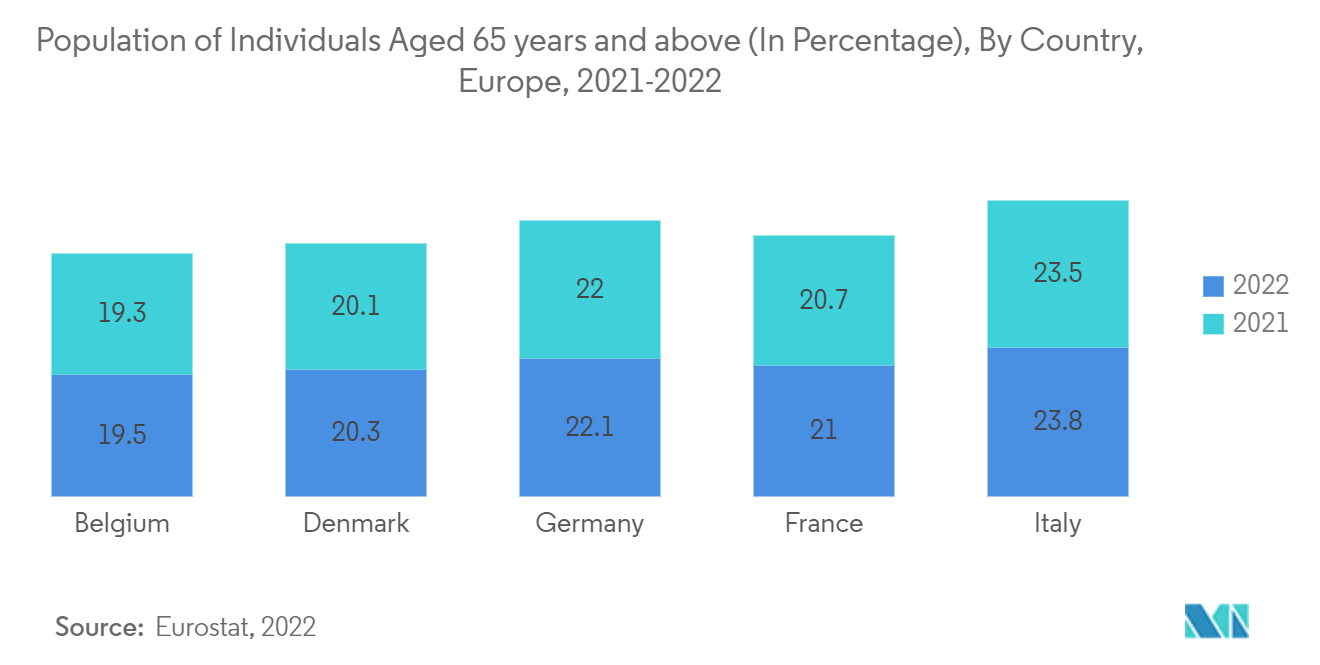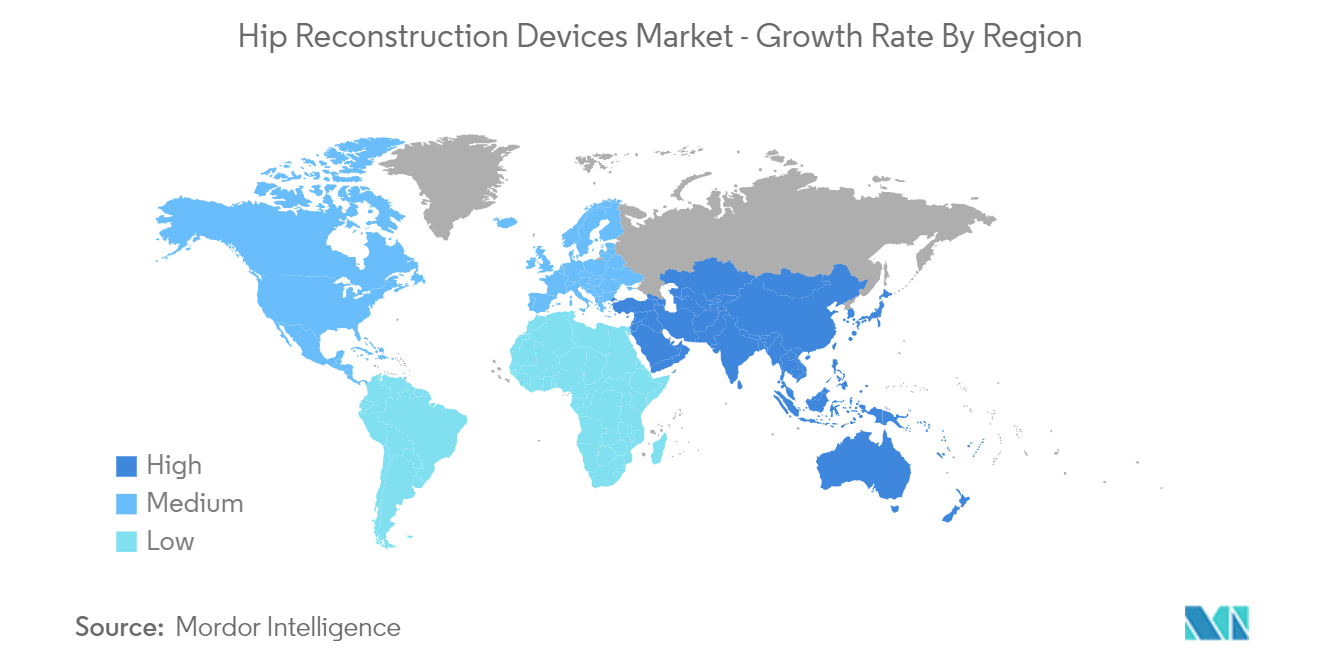Market Trends of Hip Reconstruction Devices Industry
The Hip Resurfacing Devices Segment is Expected to Witness Significant Growth Over the Forecast Period
A hip resurfacing device is a metal prosthesis implant used in hip resurfacing surgery to retreat certain bones in the hip region of the body. This implant manages pain and replaces the damaged bone and tissue, such as cartilage, for more fluid movement. Hip resurfacing devices are being increasingly used for the management of hip pain and other issues. Several studies have highlighted hip resurfacing surgery's efficacy, safety, and long-term benefits. For instance, a study published in the Canadian Journal of Surgery in May 2022 underlined the effective functional outcomes of the Birmingham hip resurfacing (BHR) for osteoarthritis. The study also stated that the BHR offered more than 10 years of long-term durability in men. The women who underwent the Birmingham hip resurfacing surgery have been observed to have the same Harris Hip Score (HHS) and visual analog scale (VAS) as the men who underwent the same surgery.
Further, a study published in Orthopaedics & Traumatology in February 2022 highlighted the short-term outcomes of hip resurfacing surgeries, which showed very low numbers of complications related to metal-on-metal bearing surfaces. The study showcased the long-term beneficial effects of hip resurfacing surgeries based on the data from the French hip resurfacing registry. Thus, the long-term benefits, high efficacy, and safety of hip resurfacing surgeries using the hip resurfacing device are expected to be adopted more in the future for the management of hip pain, mobility, and other issues. This would create more demand for the hip resurfacing device in the future.
Furthermore, the recent developments by the key players in the area of hip resurfacing devices are also expected to boost the growth of the segment. For instance, in May 2022, Exactech received the breakthrough device designation from the USFDA for its JointMedica's polymotion hip resurfacing system. Further, in January 2022, Exactech, Inc. acquired a minority interest in JointMedica Limited, an orthopedic device designer and manufacturer. Under the acquisition, both companies would collaborate to offer the next generation of hip resurfacing with the primary product of JointMedica Limited, Polymotion® hip implant.
Therefore, the hip resurfacing device segment is expected to witness significant growth over the forecast period due to the abovementioned factors, including its high efficacy, long-term benefits and safety, and recent developments by the key players.

North America is Expected to Witness Significant Growth Over the Forecast Period
North America is expected to witness significant growth over the forecast period, owing to factors such as the advanced healthcare infrastructure, the high burden of hip fractures and hip osteoarthritis, and the presence of leading players. The region has a high number of hip fracture cases, especially among elderly individuals; for instance, as per the data published by the American Joint Replacement Registry Annual Report 2022, over 2.6 million cases of hip and knee arthroplasty procedures were performed in 2021 in the United States. Out of these 2.6 million cases, primary hip procedures comprised 37.3% of the total cases. Further, the data published by the Canadian Institute for Health Information (CIHI) in June 2022 mentioned that over 55,300 hip replacements were performed in Canada in 2020-21.
The key developments by the market players in the region also bolster the growth of the hip reconstruction market. For instance, in May 2022, Exactech received the breakthrough device designation from the USFDA for its JointMedica's polymotion hip resurfacing system. The hip resurfacing system is intended for the polymotion hip resurfacing development and offers better mobility in the patients. Further, in August 2021, Zimmer Biomet Holdings, Inc. received the USFDA 510(k) clearance for its robotic system, ROSA Hip System, which is used in surgeries to direct surgeons for the evaluation and execution of a surgical plan based on its real-time feedback and the unique anatomy of the patient.
Therefore, owing to the aforementioned factors, including the high burden of hip fracture and the recent developments of the key players, the growth of the studied market is anticipated in the North American region.


